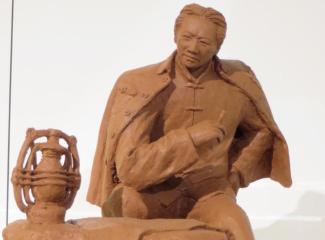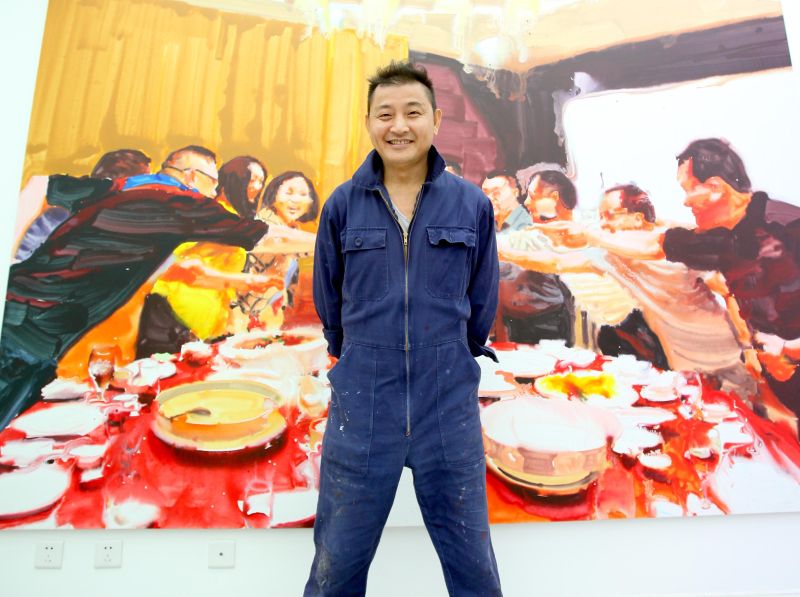Visual arts in China
Art as a reflection of cosmic harmony

Traditional Chinese art is not concerned with depicting reality, much less with serving as a visual expression of a particular personality. Instead, it aspires to reflect an all-encompassing cosmic harmony by providing an approximation of an ideal world. Its finely rendered contours dissolve mystically, taking the viewer along with them.
Trained in Confucianism, adept painters tried above all to copy their masters as closely as possible, perhaps using an even lighter touch to achieve an even more sublime landscape. Traditional Chinese painting is closely linked to calligraphy, the other major cultural discipline. It has an equally meditative character.
Interest in Western art and in freedom of expression first emerged when the Chinese empire collapsed in the 19th century under pressure from colonial powers. Some painters no longer wanted to devote themselves to dreamy interior visions, but instead wanted to look reality in the eye – though without completely breaking with tradition. For instance, Xu Beihong (1895-1953) painted proudly galloping horses as a symbol of a reawakening nation. Under Mao Zedong, the visual arts were largely limited to propagandistic kitsch. Progress stalled for 30 years.
The period after Mao’s death was marked by renewed enthusiasm for western art. Many artists adapted western styles. A Beijing version of Pop Art was the most commercially successful: it was colourful, striking, satirical, loud. The Swiss diplomat Uli Sigg was one of the first to discover the new Chinese scene. Nowadays his collection is considered the largest and most important of its kind. In 2018, he will bequeath it to the M+ museum of visual culture in Hong Kong. (fa)









